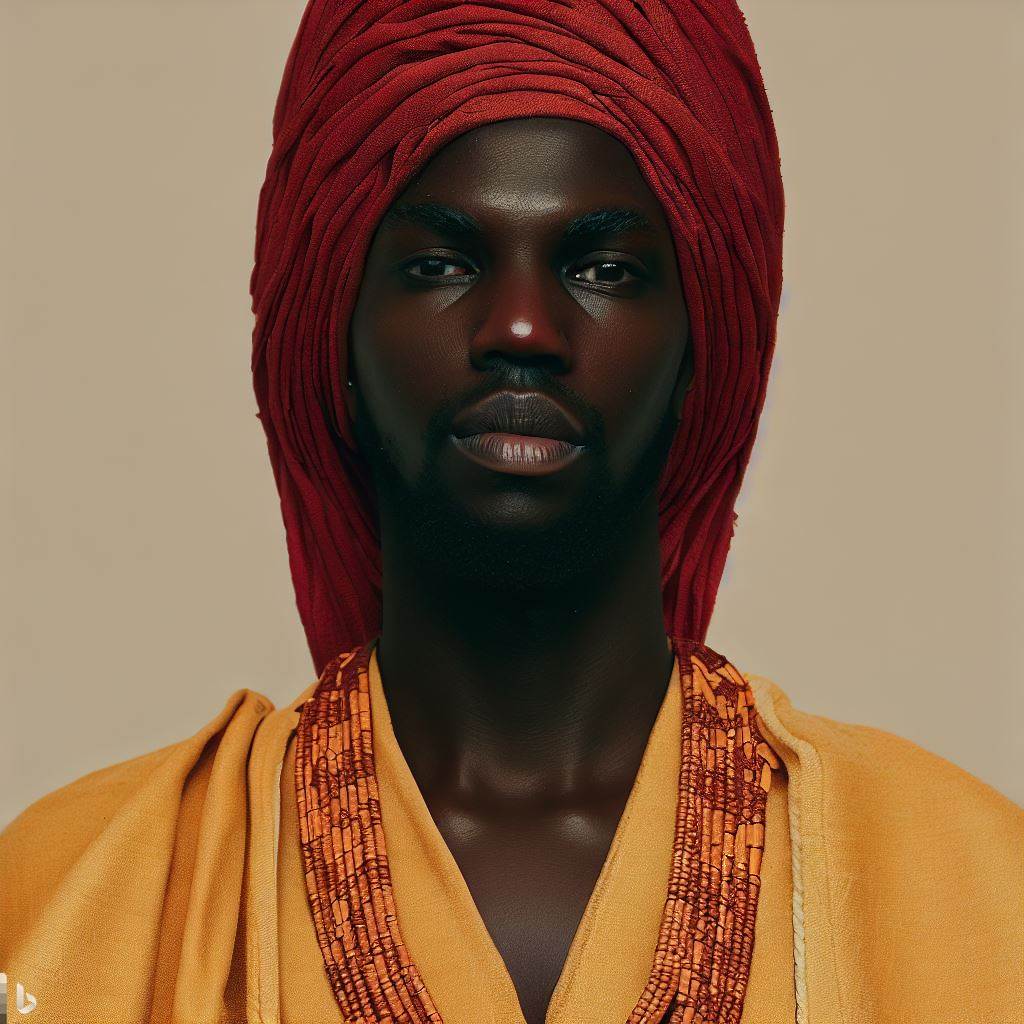Introduction
Graphic design is a creative field that combines art and technology to communicate ideas visually.
Recognizing women in graphic design is crucial for promoting gender equality and overcoming industry stereotypes.
In Nigeria, the graphic design scene is thriving, and women are making significant contributions to the field.
However, their achievements often go unnoticed, overshadowed by their male counterparts.
By showcasing and celebrating the work of female graphic designers in Nigeria, we can inspire the next generation.
Women bring unique perspectives and experiences to the table, resulting in fresh and innovative designs.
Furthermore, recognizing women in the field will encourage diversity and inclusivity in the industry.
It is essential for society to acknowledge the talent and accomplishments of women in graphic design.
Doing so not only empowers women but also promotes a more balanced and equitable design community.
By giving women the recognition they deserve, we can create a more inclusive and equal world.
Historical Overview of Graphic Design in Nigeria
In this section, we will explore the historical development of graphic design in Nigeria, focusing on its early stages of development and the influence of colonialism on design practices.
We will also look at the emergence of indigenous graphic design movements in the country.
The practice of graphic design in Nigeria has a rich and vibrant history that dates back to the early 20th century. It was during this time that the first signs of graphic design began to emerge in the country.
A. Early Stages of Graphic Design Development
In the early stages of graphic design development in Nigeria, the field was primarily influenced by Western design principles and techniques.
The emphasis was on creating visually appealing and functional designs.
B. Influence of Colonialism on Design Practices
The influence of colonialism on design practices in Nigeria cannot be underestimated.
With the arrival of the British colonizers, there was a significant shift in design aesthetics and techniques.
Colonialism brought with it a new aesthetic sensibility, which greatly impacted the design practices in Nigeria.
The British introduced Western design principles, materials, and technologies, which quickly became popular among the local design community.
C. Emergence of Indigenous Graphic Design Movements
Despite the strong influence of colonialism, Nigeria also witnessed the emergence of indigenous graphic design movements.
These movements sought to reclaim Nigerian design aesthetics and promote cultural identity.
One of the notable indigenous graphic design movements in Nigeria is the Zaria Art Society, which was founded in the 1960s.
The society aimed to fuse traditional Nigerian aesthetics with modern design techniques and principles.
Another significant movement in Nigerian graphic design history is the Nsukka School, which emerged in the 1970s.
The Nsukka School focused on incorporating traditional arts and craft techniques into contemporary graphic design practice.
In recent years, there has been a resurgence of interest in indigenous Nigerian graphic design.
Many young designers are actively exploring their cultural heritage and incorporating traditional design elements into their work.
Basically, the history of graphic design in Nigeria is a complex and fascinating one.
The early stages of development were heavily influenced by Western design principles due to colonialism.
However, Nigeria has also seen the emergence of indigenous graphic design movements that strive to promote cultural identity and reclaim traditional aesthetics.
This ongoing exploration and celebration of Nigerian design heritage contribute to a vibrant and diverse graphic design scene in the country.
Read: Graphic Design in Nigeria: Turning Passion into Profession
Notable Women Pioneers in Nigerian Graphic Design
- Aisha Augie-Kuta: Augie-Kuta is a prominent Nigerian graphic designer known for her vibrant and engaging designs.
- Tolu Alabi: Alabi is a talented graphic designer who gained recognition for her unique visual storytelling approach.
- Nkem Udoka: Udoka is a trailblazer in Nigerian graphic design, specializing in creating impactful branding and identity designs.
- Kachi Tila-Adesina: Tila-Adesina is a renowned graphic designer and illustrator, renowned for her captivating and vibrant artwork.
A. The accomplishments of influential women designers
- Aisha Augie-Kuta’s designs have been featured in various exhibitions and publications both nationally and internationally.
- Tolu Alabi’s visual storytelling approach has earned her numerous accolades and recognition in the industry.
- Nkem Udoka has successfully branded several leading Nigerian companies, contributing to their growth and success.
- Kachi Tila-Adesina’s illustrations have captivated audiences and have been widely recognized and appreciated.
B. Their contributions to the industry
These women designers have significantly contributed to the growth and development of the Nigerian graphic design industry.
- Aisha Augie-Kuta has mentored and inspired younger designers, nurturing an upcoming generation of talent.
- Tolu Alabi’s unique storytelling approach has challenged conventional design norms, pushing boundaries in the industry.
- Nkem Udoka’s branding and identity designs have helped Nigerian businesses establish strong brand identities.
- Kachi Tila-Adesina’s vibrant illustrations have added a distinct and colorful element to the Nigerian design scene.
C. Challenges they faced and overcame
- Like in many professions, women in Nigerian graphic design face challenges such as gender bias and unequal opportunities.
- Despite these challenges, Aisha Augie-Kuta, Tolu Alabi, Nkem Udoka, and Kachi Tila-Adesina have excelled and carved their niches.
- They have broken barriers, proving that gender does not limit creativity or talent.
- Through resilience and perseverance, these talented women have overcome stereotypes and flourished in a predominantly male-dominated industry.
Generally, Nigerian graphic design boasts many talented and influential women designers who have made significant contributions to the industry.
Aisha Augie-Kuta, Tolu Alabi, Nkem Udoka, and Kachi Tila-Adesina are just a few examples of the pioneers who have left their mark on the Nigerian design scene.
Despite the challenges they faced, these women have overcome obstacles and continue to inspire and shape the industry.
Their accomplishments serve as an inspiration for aspiring graphic designers in Nigeria and around the world.
Read: Exploring Graphic Design Opportunities in Nigeria’s Tech Sector
Current Status of Women in the Nigerian Graphic Design Scene
The Nigerian graphic design scene is seeing a growing presence of women in recent years.
Representation and visibility of women in the industry are improving, although there is still room for growth.
Gender disparity remains an issue in the Nigerian graphic design industry, as in many other fields.
Women often face challenges such as unequal pay, limited promotional opportunities, and biases.
However, there are numerous success stories and achievements of women in this male-dominated industry.
A. Representation and Visibility
- Women are increasingly visible in the Nigerian graphic design scene, pushing for inclusivity and diversity.
- More women are taking up leadership roles and spearheading projects, contributing to the industry’s growth.
- Several organizations and initiatives aim to showcase and promote the work of women graphic designers in Nigeria.
- Through these platforms, women have the opportunity to connect, collaborate, and gain recognition for their talent and skills.
B. Gender Disparity in the Industry
- Despite the progress made, gender disparity remains a significant challenge in the Nigerian graphic design industry.
- Studies show that women are often underrepresented in senior positions and higher-paying roles.
- Implicit biases and stereotypes may limit women’s opportunities for professional growth in the industry.
- There is a need for a more inclusive and equitable work environment that values and promotes gender diversity.
C. Success Stories and Achievements
- Many talented women have made their mark in the Nigerian graphic design scene, breaking barriers and shattering glass ceilings.
- Some have established their own successful design studios and agencies, providing inspiration for others.
- Others have received international recognition for their exceptional work, putting Nigeria on the global design map.
- These success stories inspire young women to pursue careers in graphic design, fostering a new generation of talent.
Essentially, the current status of women in the Nigerian graphic design scene is gradually improving.
There is a growing representation and visibility of women, although gender disparity remains a challenge.
Highlighting success stories and achievements can inspire and empower women to overcome obstacles in the industry.
Through continued efforts towards inclusivity, diversity, and equal opportunities, the Nigerian graphic design scene can flourish with the contributions of talented women.
Read: A Look at the Impact of Graphic Design in Nigerian Entertainment

Challenges Faced by Women Graphic Designers in Nigeria
- Limited Access to Resources: Women graphic designers in Nigeria often face challenges in accessing the necessary resources, such as design software and equipment, due to financial constraints.
- Lack of Supportive Networks: Women in graphic design struggle to find support networks that can provide mentorship, guidance, and opportunities for collaboration, hindering their professional growth.
- Gender Bias and Discrimination: Female graphic designers in Nigeria often encounter gender bias and discrimination, which can limit their chances of securing prestigious projects or leadership positions.
- Balancing Work and Family: Women graphic designers face the added challenge of balancing their professional aspirations with family responsibilities, which can affect their career progression.
A. Addressing Gender Bias and Discrimination
- Promoting Diversity and Inclusion: Encouraging diversity and inclusion in the graphic design industry can help challenge bias and discrimination by providing equal opportunities to all designers, regardless of their gender.
- Educating Employers: Employers should be educated about the benefits of gender equality, as diverse teams have been proven to drive innovation and success in the design field.
- Creating Safe Spaces: Establishing safe spaces for women designers, such as mentorship programs and online communities, can provide support, advice, and opportunities for collaboration.
- Advocating for Fair Hiring Practices: Promoting fair hiring practices, such as blind recruitment, can help eliminate gender bias during the hiring process and create a level playing field for all candidates.
B. Exploring Limitations within the Professional Environment
- Access to Training and Education: Providing affordable or subsidized training programs and workshops can enhance the skills and knowledge of women graphic designers, enabling them to compete in the industry.
- Equal Pay and Recognition: Ensuring equal pay and recognition for women in graphic design is crucial for bridging the gender pay gap and acknowledging their contributions to the field.
- Offering Flexible Work Options: Providing flexible work arrangements, such as part-time or remote work options, can help women graphic designers overcome personal constraints while continuing their professional pursuits.
C. Overcoming Societal and Cultural Barriers
- Challenging Stereotypes: Breaking stereotypes associated with women in the design industry can help create a more inclusive and supportive environment for female graphic designers in Nigeria.
- Collaboration and Networking: Encouraging collaboration and networking opportunities among women designers can help them build strong professional networks and overcome societal barriers.
- Empowering Through Education: Providing education and skills training to young girls and women about graphic design as a career choice can inspire and empower them to pursue their creative passions.
- Showcasing Female Role Models: Celebrating the achievements of successful female graphic designers in Nigeria can serve as inspiration and encourage other women to enter and excel in the field.
By addressing the challenges faced by women graphic designers in Nigeria, promoting gender equality, and breaking down societal barriers, the graphic design industry can thrive with diverse and talented professionals.
It is essential to create an inclusive environment that values the contributions of women and provides them with equal opportunities for growth and success.
Read: Graphic Design Competitions in Nigeria: Get Involved Today
Support and Opportunities for Women in Nigerian Graphic Design
In recent years, Nigerian graphic design has seen a growing number of women making their mark in the industry.
This is largely due to the increasing support and opportunities that have become available to them.
Various initiatives and organizations have emerged to address the gender imbalance in the field, providing platforms for recognition, education, and professional growth.
These initiatives aim to empower women and ensure equal representation in the Nigerian graphic design scene.
A. Initiatives and Organizations Promoting Gender Equality
One of the key players in promoting gender equality in Nigerian graphic design is the Women Who Design Africa (WWDA) organization.
WWDA seeks to amplify the voices and accomplishments of women designers through their online platform and regular events.
They provide a supportive community that encourages collaboration and knowledge sharing.
Another notable initiative is the Female Design Council (FDC). FDC focuses on advocating for women designers by showcasing their work and facilitating networking opportunities.
They organize exhibitions, conferences, and symposiums to promote dialogue and exchange of ideas among female designers and industry professionals.
B. Scholarships, Workshops, and Mentorship Programs
To further empower women in Nigerian graphic design, scholarships, workshops, and mentorship programs have been established.
These initiatives aim to bridge the gap between formal education and real-world experience.
The She Creates Academy, for example, offers scholarships to female design students, providing them with the necessary resources to complete their education.
Additionally, they offer mentorship programs that connect aspiring designers with industry professionals, enabling them to gain valuable guidance and insight.
Workshops and training programs organized by these initiatives focus on skill development and knowledge enhancement.
These opportunities allow women to refine their design abilities, learn new techniques, and stay updated with industry trends.
C. The Impact of Community Support
Community support plays a crucial role in the success of women in Nigerian graphic design.
By fostering a supportive environment, women are encouraged to showcase their talent, take on leadership roles, and excel in their careers.
Design communities such as the Nigerian Design Community (NDC) provide a space for women to connect with like-minded individuals, share their work, and receive constructive feedback.
The NDC also organizes meetups, conferences, and panel discussions that address the unique challenges faced by women in the industry.
The support from both male and female professionals is fundamental in creating an inclusive industry.
Male allies, recognizing the importance of diversity, actively advocate for gender equality and mentor emerging female designers.
With the increasing support and opportunities available, women in Nigerian graphic design are thriving.
Initiatives and organizations promoting gender equality provide platforms for recognition, education, and professional growth.
Scholarships, workshops, and mentorship programs facilitate skill development and bridge the gap between education and industry.
The impact of community support has been significant in fostering an inclusive environment where women can excel in the field.
As the Nigerian graphic design scene continues to evolve, the accomplishments and contributions of women will undoubtedly continue to shape its future.
The Future of Women in Nigerian Graphic Design
A. Presenting Optimistic Trends and Possibilities
- Rising Visibility: Women in Nigerian graphic design are gaining increased recognition for their creativity and skills.
- Diverse Styles: A rich tapestry of design styles is emerging, reflecting the uniqueness of each designer.
- Collaborations: Women are forming strong networks and collaborating on innovative projects.
- Education and Training: Access to design education and resources is expanding, empowering more women to enter the field.
- Digital Transformation: Technology is leveling the playing field, allowing designers to reach global audiences.
B. The Potential for Further Growth and Success
- Market Demand: The demand for graphic design services in Nigeria is growing, providing ample opportunities.
- Entrepreneurship: Many women are starting their design firms, contributing to economic growth.
- Mentorship Programs: Mentorship initiatives are helping aspiring designers navigate the industry.
- International Recognition: Nigerian designers are gaining global attention, paving the way for more opportunities.
- Inclusive Design: A focus on inclusive and culturally relevant design is resonating with local and international clients.
C. Encouraging More Women to Pursue Graphic Design
- Promoting Education: Encourage girls to explore design-related subjects from an early age.
- Showcasing Role Models: Highlight successful women designers as inspirational figures.
- Supportive Communities: Foster communities that provide guidance and support for women in design.
- Advocacy for Equal Opportunities: Advocate for equal opportunities and fair treatment in the field.
- Celebrating Diversity: Embrace and celebrate diverse perspectives in design, fostering creativity.
In the vibrant landscape of Nigerian graphic design, women are carving their niche with remarkable achievements.
The future holds promise, with growing recognition, expanding opportunities, and a diverse, inclusive design scene.
To ensure this momentum continues, it’s crucial to encourage more women to embark on their graphic design journeys, fostering a dynamic and inclusive industry for all.
Conclusion
This blog post has explored the scene of women in graphic design in Nigeria.
We have discussed the challenges they face and the strides they have made in the industry.
We have highlighted the underrepresentation of women in the field and the barriers they encounter.
However, we have also shown how talented and resilient Nigerian women designers have been in breaking these barriers.
Recognizing and supporting women in graphic design in Nigeria is crucial for fostering a more inclusive and diverse industry.
Their perspectives and contributions enrich the field and propel innovation.
It is essential for individuals, organizations, and the industry as a whole to actively advocate for equality, provide opportunities, and create a supportive environment for women designers in Nigeria.
Publish Your Professional Profile, Business or Brand
Showcase your expertise, gain trust, and boost visibility instantly on Professions.ng.
Publish NowTogether, we can build a stronger and more vibrant graphic design scene.




